Spotlight Story
Beverly Hills cultivates some history
February 7, 2013
Virginia Robinson put Beverly Hills on the map as an enclave of the rich and famous. Now, more than a century later, Beverly Hills has returned the favor to its storied grand dame.
The Virginia Robinson Gardens, bequeathed to Los Angeles County after its namesake’s death in 1977, last month became an official local historic landmark. Built in 1911 by the Robinson’s department store heir Harry Winchester Robinson and his then-new bride, Virginia, the 6½-acre estate on Elden Way—now run under the auspices of the Los Angeles County Department of Parks and Recreation—has long held landmark status at the state and national level.
“This was essentially the first great estate in Beverly Hills,” explains Robinson Gardens Superintendent Timothy Lindsay.
But Beverly Hills created its historic designation only a year ago, prompted by the near-demolition of an architecturally significant house designed by Richard Neutra. The city has since named seven local landmarks, with more in the pipeline, according to Noah Furie, a former Beverly Hills planning commissioner and founding chairman of the city’s new Cultural Heritage Commission.
The Robinson estate was the second property in the city to receive the designation, after the neighboring Beverly Hills Hotel.
“This is one of the most unique properties in our city,” says Furie. “With all its different types of gardens, and its owners being the founders of one of Los Angeles’ most important department store chains, and their many contributions to the immediate and greater community, it checked off multiple criteria in our ordinance.”
Furie says the new local ordinance has proven to be a milestone for Beverly Hills. Even before the aborted demolition of Neutra’s Kronish House in 2011, preservationists had feared for the city’s architectural history.
“It was getting to the point that, if we didn’t do something, our past would be lost forever,” he says. “Significant estates done by master architects had been subdivided into multiple properties. We’d lost, including major remodels, the Burton Green estate, the Max Whittier estate, the Gershwin House—the list is a mile long.”
The new preservation ordinance imposes strict rules for changing or demolishing buildings that are older than 45 years and that either have some historic or cultural significance or are designed by master architects.
The Robinsons discovered their site in the early 1900s while searching for the Los Angeles Country Club in what was then the rural edge of the city. When they finished the house, designed for them as a wedding gift by Virginia’s father, architect Nathaniel Dryden, fields of barley stretched before them to the horizon.
But as the city grew up, the property, which was landscaped by Virginia and a dozen full-time gardeners into an expansive collection of lush, terraced gardens, became a public gathering place and an A-list destination. The Italianate pool house alone was 3,000 square feet and the palm grove still boasts the largest collection of Australian king palms in the continental United States.
Celebrities from Mary Pickford and Douglas Fairbanks to Fred Astaire and Ginger Rogers cavorted at the Robinsons’ lavish parties, as did a who’s who of Southern California society and business. Even after Harry Robinson died in 1932, Virginia—who took over the department store chain that her husband’s father had founded—maintained the civic momentum, accompanied by her beloved pets (she never had children and never remarried). For 33 years, her home was the site of a famed Hollywood Bowl kickoff gala; her last major domo came from the Vatican and spoke five languages, according to the estate superintendent Lindsay.
“Virginia Robinson worked with Dorothy Chandler to build the Music Center, she was great friends with Lillian Disney and the Duke and Duchess of Windsor,” Lindsay says.
And, he adds, Virginia adhered to a level of hospitality that would have impressed Downton Abbey.
“She had a large staff of 21 trained in the same level of etiquette as the White House,” says Lindsay. “After 6 p.m., the men all had to put on black tie and tails. Invitations were handwritten. There was always valet parking. When you arrived at the house, one man in white gloves would open the gate and another would open the door and announce your arrival, and she would meet you in the receiving line.
“Remember, Southern California was still pretty much a dusty cowboy town, in those days. But she set a standard for gracious living. She had a legendary elegance.”
Posted 2/7/13
A new Rx for our shelter pets
January 31, 2013

These lucky dogs were adopted from L.A. County shelters, where hopes are high because of a new grant.
An injured eye shouldn’t be a death sentence. And yet, such minor medical problems often lead to euthanasia for dogs and cats in animal shelters.
Dr. Maria Sabio-Solacito has been treating animals for 20 years, five of them as head veterinarian for Los Angeles County’s Department of Animal Care and Control. She says she’s seen far too many animals put down when some basic medical treatment could have made them more adoptable.
“Before, the idea was just to grab all the stray dogs and, if no one takes them, euthanize,” said Sabio-Solacito. “Now, we are much more focused on animal care.”
Giving that effort a big boost, the Board of Supervisors on Tuesday approved a $50,000 grant to enhance medical-care capabilities at the county’s six regional shelters, or “animal care centers.”
Limited resources have been the primary challenge for the county’s shelter system, the nation’s largest. Each year, the county is forced to euthanize thousands of cats and dogs. Between July 2011 and June 2012, the agency killed 24,605 cats and 17,745 dogs. (But it also was successful in getting 7,387 cats and 26,942 dogs into adoptive homes or reunited with owners during that period.)
The grant was given to the L.A. County Animal Care Foundation by the American Society for the Prevention of Cruelty to Animals. The foundation is a nonprofit organization that raises funds for the Department of Animal Care and Control and supports spay and neuter programs, pet adoptions, public education and other animal welfare activities in the region.
With the money, the county will purchase eye surgery, dental and blood-testing equipment—resources Sabio-Solacito and her colleagues identified as the most needed and most likely to make the biggest impact. The agency currently contracts with local clinics for those services, an expensive practice that limits how many animals it can treat.
The equipment will enable staff to perform minor surgeries, dental cleanings and offer other vital treatments to sick and injured animals. Eye and dental conditions are highly common in shelters and can lead to serious secondary infections. Shelter officials are optimistic that the new medical services will lead to more adoptions and fewer deaths.
“A lot of animals don’t get adopted just because they have bad teeth,” said Sabio-Solacito. “It’s just because they have been neglected.”
Appearances matter for pups and felines seeking new homes, said Evelina Villa, spokesperson for the county agency. Potential owners shy away from pets with unattractive problems that could require treatment.
“The breath is a big thing too,” she laughed.
For more serious injuries, the Animal Care Foundation funds a program called “Dreams Come True.” Using donations and reduced-rate services from local veterinary schools, even some of the toughest cases of injury or abuse can be treated.
“A huge portion of the animals that come into the shelter were hit by cars,” said Sabio-Solacito. “We used to euthanize. Now we can do surgery or amputations.”
Sabio-Solacito hopes to someday obtain enough funding for a full-service animal medical center, which she’d call “The Second Chance Hospital.” For now, however, she says she’s thrilled with the improvements that are on the way.
“Every little bit of help that we get to properly diagnose and treat conditions makes a huge impact.”
Posted 1/31/13
Understanding gun violence
January 25, 2013
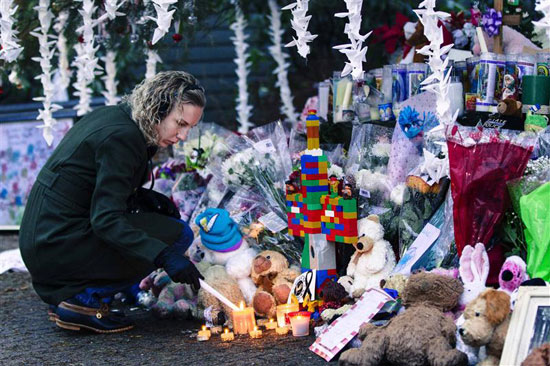
The Newtown elementary school shootings have pushed mental health issues to the forefront of the gun debate.
Dr. Marvin J. Southard is of two minds when it comes to the current debate over gun violence and the mentally ill.
The director of Los Angeles County’s Department of Mental Health, the nation’s largest, welcomes the renewed awareness of the need for programs and treatment. But he worries that, because mass shootings such as those at Newtown, Conn.—and Aurora, Colo., and Tucson, Az.—were all committed by young men in the throes of apparent breakdowns, the connection fuels the false impression that the mentally ill among us are more violent than the rest of the population.
“Gun violence is more connected with the availability of guns than it is with mental illness,” says Southard.
“I applaud the attention to the need for additional resources for mental health treatment, but some of the connections between mental health and gun violence are tenuous. The mentally ill are no more likely to be violent than the man on the street.”
Southard has been among those who have sought to provide context since the December massacre at Sandy Hook Elementary School, which claimed 26 lives. Although gun control has been advanced as a way to prevent such tragedies from recurring, mental health care has also been raised in the national conversation, with Los Angeles County, long a pioneer in mental health policy, emerging as a leading voice.
This week, state Senate President Pro Tem Darrell Steinberg (D-Sacramento) delivered recommendations to Vice President Joe Biden’s gun violence commission that included a proposed national version of one of the county’s most successful anti-gun-violence initiatives. The program, a comprehensive school threat assessment and response team known as START, has preempted hundreds of potential threats in the three years since its creation.
“I think we can be pretty proud of what we’ve done here in Los Angeles County,” says Southard, adding that the program is underwritten by the state’s 2004 Mental Health Services Act, or Proposition 63, which taxes millionaires to fund mental health care.
“We have a lot of evidence here about what works.”
Southard’s prescription? Prevention and early intervention, especially when it comes to schools.
The START program, for example, not only brings therapists into schools and colleges to intervene when teachers are worried about a student, but also educates teachers and staff about the difference between normal adolescent behavior and a serious mental illness. A corollary program focuses on children in gang areas and violent neighborhoods, offering early intervention for kids who have been traumatized or who have witnessed trauma—an experience that can desensitize a child to violence later on.
Another local success story, he says, is Club LETS, a nonprofit group that enlists students to help erase the stigma of mental illness by talking openly about the kinds of issues that often isolate and alienate children and adolescents—from bullying and social exclusion to anorexia and depression. Launched several years ago at the San Fernando Valley’s Ulysses S. Grant High School, the program now has chapters in schools across California and the nation.
“In middle school and high school, the main developmental task is to learn how to make and keep friends, and if people are left out of that process, they’re really in pain,” says Southard. “We emphasize social inclusion and outreach to kids who feel marginalized.”
Beyond schools, he says, providing wraparound services for the seriously mentally ill might keep more of them in treatment. Treating substance abuse and mental illness together, rather than separately, Southard says, could head off the one situation—inebriation—in which the mentally ill can be more violence-prone than the population at large.
Efforts to make civil commitment easier, he says, are less promising because of concerns that the civil liberties of the mentally ill might be violated. “There’s a need for civil commitment reform, but I think it’s a red herring in this case,” he says.
For instance, Laura’s Law, which was passed here in 2002 after a young mental health worker was shot to death by a psychiatric patient in Nevada County, gives counties the discretion to mandate treatment under court order. But Southard says that the law is so narrow and has so many technical problems that Los Angeles County—the only county besides Nevada to implement it—uses it only as a way to mandate continued treatment for patients who are being released from
locked psychiatric facilities.
Nor do such laws guarantee the public safety. Southard notes that Arizona allows involuntary treatment and Jared Lee Loughner, who shot U.S. Rep. Gabrielle Giffords in Arizona’s mass shooting last year, had a track record of apparently schizophrenic behavior. Yet no one petitioned to force him into care.
Southard says he worries that conflating gun violence with mental illness will mislead the public and add stigma “just when we were turning a corner.”
“My fear is that it could make people afraid of people with mental illness, and that it could make people with mental illness afraid to get help for fear that they will be seen as dangerous,” Southard says.
“There are lots of kinds of mental illness, and only a very few in which people are so out of contact with reality that they might resort to violent actions.” The prevalence of schizophrenia is about the same around the world, from country to country, he notes. “But that’s not the case for gun violence.”
Posted 1/25/13
A passage to India
January 16, 2013
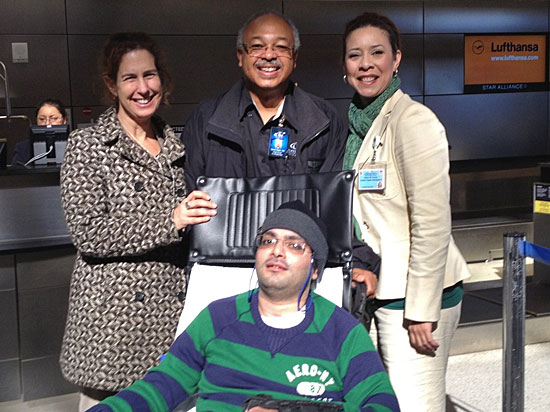
Vishal Makhija at LAX. With him are, from left, LAC+USC Social Work Supervisor Jan Crary, flight nurse David Hogan and Assistant Hospital Administrator for Medical Services Sandy Correa.
Vishal Makhija is going home.
He journeyed to Los Angeles in 2009 with dreams of becoming an accountant. Instead, he spent the past nine months at Los Angeles County+USC Medical Center—his body broken, his brain permanently damaged from a hit-and-run driver who mowed him down during an evening walk. On Wednesday morning, Makhija’s stay came to an end as he was gently lifted into a special medical transport jet bound for Mumbai, India, where his family will give him the constant care he now needs.
The $19,200 trip is being underwritten by Los Angeles County.
“Our family is middle class by Indian standards but, for us, the cost was out of the question,” says Kiran Makhija, who has lined up a nurse, a physical therapist and a specialized hospital bed in India for her 32-year-old brother. “This is a huge relief, and we are very grateful. I am 100 percent sure that Vishal will heal better and faster with family and friends who love him here.”
Makhija’s case represents an innovative effort by top county health officials to reduce hospital costs while improving patient outcomes for large numbers of hard-to-place indigent patients who are taking up public hospital beds longer than medically necessary.
Dr. Mitchell Katz, director of the county’s Department of Health Services, says he hopes to create a special fund in his budget for “creative discharges” like Makhija’s that, with some imagination, could be solved in ways that do right both by the individual patient and by the county’s limited pool of health care resources.
“Of course, each case is different,” Katz says. “There isn’t a cookie-cutter solution.” Housing and special placements have their own price tags, he notes, and sometimes the circumstances and the medical needs will make the hospital the most cost-effective decision.
“You have to look at each person and figure out what they need,” he says. “But once you’ve figured that out, if there’s a solution that’s substantially less expensive, you should be able to move on it.”
Dr. Christina Ghaly, LAC+USC’s interim chief executive, says that on any given day, approximately 10% of the hospital’s acute care medical beds, and about half of its acute care psychiatric beds, have been occupied for weeks or months by patients who should be in a lower level of care but have no provider willing to take them.
Because LAC+USC is a hospital of last resort for the impoverished, homeless and poorly insured, its rate of hard-to-place patients is far higher than that of private medical centers. At any given time, there are as many as 60 patients like Makhija, who not only increase the public hospital’s costs but also crowd out patients in need of acute beds. Some have remained hospitalized for so long that they’ve lost their housing. The county’s other three public hospitals fare little better, says Ghaly: “There’s a patient at Olive View whom we’ve been trying to place now for two years.”
Katz says he has been concerned about Los Angeles County’s high numbers of hard-to-place patients since he arrived here from San Francisco two years ago. Aside from the financial issues, he says, overlong hospitalizations can have serious medical and psychological downsides for patients, including risk of infection, atrophy and disorientation.
“When I would ask about why we weren’t sending someone to supportive housing or a board and care, or why we weren’t sending people home to be reunified with family, I was told, ‘Well, the county is in the midst of a fiscal crisis and we don’t have the budget.’ But that has never made any sense to me, because, of course, the most expensive thing to do is to keep people in the hospital.”
So the county has begun exploring alternatives, from “respite” beds where homeless convalescents can recuperate in their own bedrooms like more fortunate patients to providing financial incentives to skilled nursing facilities for taking difficult or poorly insured patients. Katz estimates that broadening the options for lower levels of care could save the county “tens of millions of dollars” while improving patient care.
The push is especially important in the wake of the federal Affordable Care Act, which promises to change the business model for health care providers by, among other things, accelerating the trend toward lump sum allotments for patients and procedures, rather than reimbursement for days in a hospital bed or fees for a medical service.
“But it’s not just about money. It’s about finding the right place for the person,” Katz says.
Finding a place for Makhija was especially frustrating because, unlike many indigent patients, his relatives were ready and willing to care for him, says interim CEO Ghaly. “The problem,” she says, “was mainly logistical.”
In fact, Makhija was planning to return to India, according to his sister. “Nothing was going right for him there,” says Kiran Makhija, an account manager for a public relations firm in Dubai.
“He used to dream, talk, visualize, live and breathe U.S.A.,” she says. “He was the biggest fan of Oprah Winfrey and would lay awake late at night watching U.S. destinations on the Travel channel.” But after spending four years in New Jersey on a visa to work and study accounting, she says, he was laid off during the 2008 financial crash and never recovered.
He moved to Los Angeles, hoping to find work, but couldn’t muster more than low-paying jobs in retail, according to Sahib Dudani, a family friend in Laguna Hills to whom Makhija had reached out. Dudani says the young man was living in a rented room in the Boyle Heights apartment, a few blocks from the site of the April 18, 2012, accident.
Hospital records show that paramedics rushed Makhija to the emergency room at 4:25 a.m. after a passerby saw him lying unconscious in an intersection near Soto Street and the I-10 Freeway. His legs were broken, his brain was traumatically injured and his body was marked with tire tracks, but no witnesses came forward and no arrests were made.
“He was coming to me [on the week of the accident] so I could advise him on his next step, including possibly going back to India,” says Dudani, a computer scientist who had known Vishal’s aunt in Mumbai. “When we didn’t hear from him for a couple of days, we got very concerned and went to his address.”
Kiran Makhija says family members were frantic when they learned what had happened, but their applications for emergency visas repeatedly denied. “They said he was in the U.S. illegally, so no one in the family could come for him. But he had a valid green card.”
When her brother emerged from intensive care after a month, the family began brainstorming ways to get him back to India. Kiran, who had been working in Mumbai, took a higher-paying job in the United Arab Emirates, realizing her semi-retired parents would need the extra money.
But as months passed, it became clear that Vishal would never be able to get on a commercial airplane. Although he begged to come home, his injuries had left him impulsive and unable to sit up for more than three hours at one time. He was incontinent and could not move without a specialized stretcher and wheelchair. An international air ambulance would cost tens of thousands, if not hundreds of thousands, of dollars—an impossible sum either way for the family.
Meanwhile, hospital social workers also were running out of options. Makhija had Medi-Cal coverage, but it would only reimburse for hospitalization that was a medical necessity.
By now it was November and the hospital’s unreimbursed costs were approaching $300,000. Every day, social workers were calling ten or more nursing facilities throughout the state, but none would take him. Such facilities, which typically care for elderly patients, resist taking younger, more labor-intensive clients, particularly those with permanent brain injuries and public insurance, such as Medi-Cal, that reimburses far less than private policies, Ghaly says.
“Finally, we exhausted all other efforts and started thinking outside the box,” says Cecil Clark, an associate hospital administrator at LAC+USC.
Clark says that as he cast about for ideas from his team, Sandy Correa, who had come on board the month before as an assistant hospital administrator for medical services, piped up with a question: If Makhija wanted to go home, and his family couldn’t come and retrieve him, why couldn’t the hospital take him to them?
The specialized transport she eventually found, Florida-based Commercial Medical Escorts, Inc., was substantially cheaper than an air ambulance—and less than half the monthly cost of Makhija’s bed at LAC+USC. He’ll be able to lie flat as much as necessary during his journey and will be accompanied by a nurse from Los Angeles to Mumbai, where he is scheduled to land early Friday.
Although such escorts are often used by other hospitals, health services director Katz says they are a departure for Los Angeles County. He says it took more than a month to get all the necessary approvals inside the bureaucracy but the alternative was for the county to foot the bill for Makhija to spend the rest of his life in an institution.
“It is not right to spend all that time in a hospital doing nothing,” says Kiran Makhija. She and her parents are now counting the days until Vishal’s challenging homecoming. “We are not the kind of family that would leave my brother alone.”
Lying in his hospital bed on a recent afternoon under the watchful eye of a nursing attendant, Makhija says he has no memory of the accident that maimed him, but confirms that he wants to return to Mumbai.
“I don’t want to live here,” he says. “I don’t have a job here. I want to go home.” He says he has spoken to his sister about the arrangements and that he’s “very excited.” Asked what he remembers about Mumbai, he replies simply: “It is beautiful.”
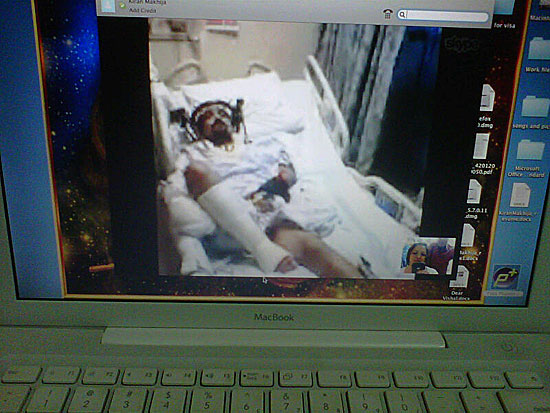
Makhija Skypes with his sister in India, Kiran Makhija, who has lined up a nurse, a physical therapist and a specialized hospital bed for him.
Posted 1/16/13
Helping kids be a force “4GOOD”
November 20, 2012
Maybe, as the ‘80s bestseller says, everything we need to know we learned in kindergarten—but for the Athanas and Goldman families, it turned out that wasn’t nearly early enough.
The San Fernando Valley couples, close friends since their children were in preschool together, wanted to find a way for even the youngest members of their families to taste the joy of generosity.
“We’re both civic-minded families, and we wanted to involve our kids in giving back,” says Erika Athanas. But there was a problem: most of the volunteer opportunities they encountered were geared to high school students and adults. Even the best-intentioned little kids weren’t a good fit for dishing out dinner at a homeless shelter, for instance.
So an idea was born and, this being 2009, that idea came with a Facebook page. The goal, initially, was just to reach out and see if there were other people searching for child-friendly volunteering events and causes that make it possible for families to unplug and spend time together while making the world—or at least a small corner of it—a better place.
The answer was a resounding yes. And today, the nonprofit organization the families created, 4GOOD, has grown into a social networking success story and home-crafted online resource center. Athanas, who co-founded the group with her husband, Peter, and their friends Katie and Jeff Goldman, estimates there are now 2,500 “4Gooders” involved with the organization.
“I cannot tell you how many people have reached out to us to say, ‘Why don’t organizations include children? Why is it so hard to find them?’ ” Athanas says.
Responding to the demand, 4GOOD’s first annual “Family Day” earlier this year attracted hundreds of participants (look for the next one on April 7, 2013.) Kids got a hands-on taste of volunteering by making placemats and flower pots for seniors who receive Meals on Wheels and by crafting cards for military service members as part of Operation Gratitude.
The calendar on the 4GOOD website links to dozens of activities, ranging from helping out at the Baby2Baby Warehouse distributing “gently used” gear to needy families to cleaning cages and handing out hay to rescued bunnies at a shelter. This month, 4GOOD is asking its members to take part in a pre-Thanksgiving food drive sponsored by Jewish Family Service’s SOVA program. And on December 2, they’re joining forces with the group Friends & Helpers on an Adopt-a-Family/gift wrapping event in Tarzana.
Last year, Scholastic’s Parent & Child magazine recognized the group’s work by selecting the Athanases as its Family of the Year.
That brought a cover photo shoot, an appearance with Hollywood stars William H. Macy and Felicity Huffman, and even an online storybook populated with illustrated versions of Erika, who works part-time in product development, Peter, a business consultant, and their sons: Izak, now 12, and Eli, who’s about to turn 8.
Along the way, 4GOOD hasn’t just made a difference in the lives of others. It’s also been a transformative force for the founders’ own families.
“I really feel my kids will be better human beings and better adults because I’m showing them the way,” says Athanas, who “never volunteered in my life until I was in my 30s” but wanted things to be different for her children.
“A lot of these things that we suggest to do are fun. We want them to have fun and to enjoy it,” she says. “My own kids drag their feet sometimes, of course. That’s the nature of being a kid. But at the end of every single thing, they end up saying ‘You were right, Mom. That was really incredible.’ ”
Posted 11/20/12
The mountains’ new king of the hill
October 30, 2012
In 1976, David Szymanski’s grandparents took him on a Bicentennial road trip across the United States.
“I was eight,” he remembers. “We stopped at the Badlands and Mt. Rushmore, Yellowstone, Hoover Dam, maybe the Grand Canyon. The landscapes of the Great Plains and the West were so different in so many ways from what I was used to. I remember coyotes yipping in Montana and Wyoming. It was spectacular. I was amazed that such places existed.”
That amazement stayed with him—as a teenager in the Rust Belt, as a University of Michigan engineering student and, in his senior year of college, in a random-but-career-altering class on the literature of the American wilderness that “dredged up everything I’d felt at eight.”
Now Szymanski, a 44-year-old veteran of the National Park Service, is managing of one of Southern California’s own spectacular places as the new superintendent of the Santa Monica Mountains National Recreation Area.
Szymanski was named after a 10-month search for a successor to the popular Woody Smeck, who was the public face of the nation’s largest urban national park for more than a decade before moving on to a job as a deputy superintendent at Yosemite National Park.
It’s a tough act to follow, acknowledges Szymanski, who was half-joking but completely awestruck when he referred to Smeck as “St. Woody” during a recent meet-and-greet with public officials. The 153,750-acre recreation area is a complex jurisdictional patchwork with players at every level of government as well as powerful community and nonprofit interests; as superintendent, Smeck worked on everything from preservation guidelines for sensitive wildlife habitat to firefighting policy to funding for thousands of acres of open space acquisitions.
“He’s a great, great, great, great person,” Symanski says.
Szymanski, however, brings his own set of credentials, including long experience in areas with complex issues requiring cooperative management. He has spent nearly two decades working with parks and protected areas, including 14 years in the National Park Service.
His most recent stint was as superintendent of the Lewis and Clark National Historic Park in the Pacific Northwest, but he also has served at Everglades National Park in Florida, Voyageurs National Park in Minnesota, on the Senate Subcommittee on National Parks as a congressional fellow and, in the 1990s, in Madagascar, working in that country’s then-new national park system.
“I’ve always enjoyed working in places where we’ve had to work with communities and partners to get things done,” he says. “At Lewis and Clark, we included several state parks in our boundaries, and in the Everglades, it was often sugar farmers against fishing guys, and finding solutions among people that often otherwise wouldn’t be in the same room. This is the best place in the country for those kinds of things.”
On the job for all of three weeks, Szymanski has already hit the ground hiking, reaching out to stakeholders and learning the landscape even as he settles in with his wife, Elaine, and their 6- and 8-year-old sons, and tries to squeeze in the occasional bike ride (he’s an avid cyclist.)
“I’ve hiked from Newbury Park up the Boney Mountain Trail. I’ve biked the Backbone Trail. I went to Solstice Canyon with the granddaughter of [grocery store magnate] Fred Roberts, who assembled so much of the canyon property and sold it into conservation. I met the neighbors at Zuma and Trancas Canyons, and went to a lot of smaller areas. Of course, I’ve spent time at the new Visitor Center at the King Gillette Ranch.”
On a recent afternoon, he strolled along the Inspiration Loop Trail near the Visitors’ Center, discussing ways to improve signage—a small-but-complex question, particularly for pet owners, since the 5-minute walk between the center and the unmarked trailhead traverses both National Park land (which allows dogs) and land overseen by the Mountains Restoration and Conservation Authority (where dogs are forbidden).
But the hike, led by NPS Park Guide Bethany McCormick, was also a lesson in the storied history of the property’s Hollywood origins and its stints as a retreat for various cults and religions. And midway through, it was interrupted by a family of five mule deer, who paused on the sun-dappled trail and then bounded away.
“The mountains in a way say so much about Los Angeles, about the people who came here to seek their fortune and then assembled this megalopolis,” says Szymanski. “But what’s also impressive to me is knowing that in 1978, most of the area was not protected. It’s really humbling in some ways because there are so many people here who are so active and with such a long list of accomplishment in this area. Our job, I think, is to continue that vision and to bring the resources we have at our disposal to that partnership.”
And, he adds, to hold onto our sense of amazement.
“My wife went out for a walk last week near where we’re staying, which is near Cheesboro and Palo Comado Canyons, and took a movie for our children, so they could hear the coyotes yipping in the background,” he marvels. “She was less than a half-mile from a residential area, and yet you had the sounds of the wild.”
Posted 10/30/12
Making kids’ trauma less traumatic
September 11, 2012
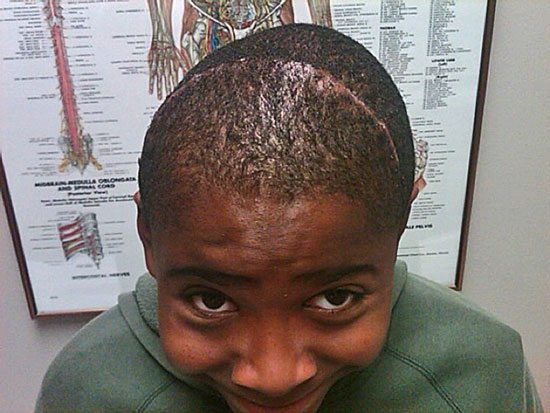
Jordan made a full recovery from the head injury for which he was treated at the pediatric trauma center.
JoAnn Hanson-Nortey got the awful phone call a year ago this week: Her 10-year-old son, Jordan, running full-tilt on the playground, had collided with another child and suffered a severe head injury.
“It was a freak thing,” recalls the Sherman Oaks mother. “They had banged heads running around a wall. You wouldn’t think it would be that serious, but it caused a skull fracture—the neurosurgeon said it was like a crack in an eggshell.” Had he not received immediate treatment, he could have suffered permanent brain damage or worse.
Instead, emergency medical technicians swiftly transported both Jordan and the other child, who also was seriously injured, to Northridge Hospital’s Richie Pediatric Trauma Center, which celebrates its second anniversary on October 4.
Championed by Los Angeles City Councilman Richard Alarcon with crucial assists from Supervisor Zev Yaroslavsky, state Sen. Alex Padilla (D-Pacoima) and others, the center is one of only seven such units in Los Angeles County. It is also the first and only one to serve the San Fernando Valley’s littlest trauma patients, who until the center’s 2010 opening had to be airlifted to UCLA’s pediatric trauma center or to Children’s Hospital in Hollywood.
“We have saved some real lives,” says Northridge Hospital’s interim president, Saliba Salo, noting that the so-called “golden hour”—the 60-minute window right after an injury in which quick treatment can make a life-or-death difference—is doubly important for children. Indeed, pediatric patients are so much more fragile that doctors refer to their window as the “platinum half-hour.”
“In the fiscal year before we opened the unit, we saw only eleven kids under age 14 for trauma,” says Salo. “But in fiscal year 2011, we saw 151, and we anticipate 155 this year.”
The center has been a longtime goal for the Valley, where doctors, first responders and community leaders advocated for years for its opening. Alarcon, in fact, made it a personal crusade after his 3-year-old son, Richie, was gravely injured in a 1987 car crash on Victory Boulevard; a suicidal driver rammed into the car in which the baby was riding, and because there was no pediatric trauma unit nearby, the little boy’s treatment was delayed while he was airlifted to Children’s Hospital Los Angeles, where he died the next day.
In 2005, Alarcon—who by then was in the state senate—introduced a bill to authorize California counties to levy a surcharge on traffic tickets, a portion of which would fund pediatric trauma centers. The bill was vetoed, but Alarcon introduced it again in 2006.
This time it passed, and when it was scheduled to expire three years later, Padilla authored an extension. Los Angeles County Supervisors, meanwhile, agreed to levy the fine here, and to tap the so-called “Richie’s Fund” revenue to help launch the unit. Although private donations to the hospital remain crucial, the county’s funding distribution to its trauma and emergency care network has since included $1.6 million in startup operating funds for the center in 2011 and $1.74 million this year.
County health officials report that the Northridge unit not only hastens care for the Valley’s trauma victims, but also shortens wait times at the county’s other trauma care units by lightening the patient load elsewhere. Before Northridge Hospital was certified as a pediatric trauma center, every young trauma patient in the Valley or even points north of the county line had to be transported long distances to receive care, usually to Children’s Hospital in Hollywood or to UCLA. This year, nearly 42% of them have remained in the Valley for treatment.
The unit this year treated children from 47 cities and from as far away as Sacramento County, though the bulk of its patients come from the Valley. That proximity is key because having family members at hand plays a big part in a child’s recovery, says Melanie Crowley, who manages the hospital’s trauma program.
“If you or I had a child transported to UCLA or Children’s, we might wonder which car we were going to take to the hospital to see them,” says Crowley. “But a lot of our families don’t even have cars. They have to decide which bus to take.”
Crowley says the center’s cases run the gamut. “But the ones that stick in my mind are the ones that happen just because of the normal things that kids do. Kids who were just jumping on the couch when they fell and got a bleed on the brain. Kids who chased a ball out onto the street and got hit by a car. Kids injured because a car seat was installed improperly.”
And kids like Jordan, who, because the Richie Center existed, was getting a CT scan in preparation for neurosurgery within 45 minutes of his accident.
“The doctor literally called me from his car on the way to the hospital to explain the operation,” recalls Hanson-Nortey, a single mother who remained at her son’s bedside, 24-7, for the next five days. After some physical therapy, he was home, and 3 months later, Jordan was back to school full-time.
“I probably could have gone back in like a month,” the now-11-year-old boy says, “but my mom wanted to be safe.”
Since then, his scars have healed, his hair has grown back and he plays tennis and begs his mother to let him play football—in vain. She says she has seen a side of her son that is braver than she had ever imagined; he says he’d like to be a policeman someday.
“I wasn’t that scared because I knew the doctors were going to make me better,” he says now. His mother’s perspective is slightly different.
“The people at the hospital turned something really awful into something that was just pretty bad that we could get over,” she says.
Posted 9/11/12
Long may she wave—o’er Grand Park
September 6, 2012
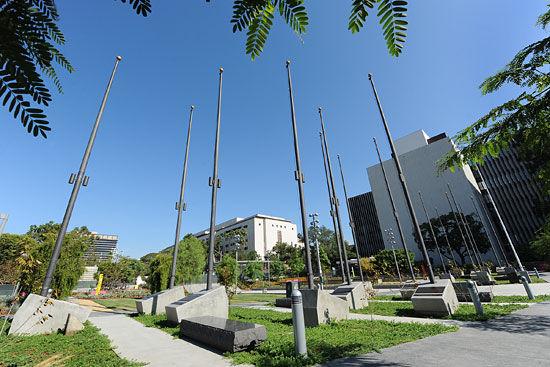
The historic flag court has been moved and positioned for higher visibility and more public space in Grand Park.
The next shiny, new section of Grand Park debuts Tuesday, but its centerpiece has been around for decades—although odds are you’ve never heard of it. Called “The Historic Court of American Flags,” it’s long been flying under the radar.
When the court was first completed in 1971, it featured 18 replica flags dating back to 1774, with plaques describing each one. The minimal landscaping surrounding the display served mostly as a cover for a four-level parking garage below. As far as public visibility, you’d be lucky to see more than a few stars and stripes from the neighboring streets.
Now, as the Grand Park Project gives the 12-acre space between the Music Center and City Hall a dramatic makeover, the flags have been uprooted from their original spot in the center of the park space and arranged parallel to Hill Street and Broadway. This not only vastly opened up the middle of the park’s third block but also gave the flags a more showy location.
Dawn McDivitt, the county’s project manager for Grand Park, said the flag court provides the community with “a space to reflect” on the nation’s—and the county’s—history. She said the county’s Department of Military and Veterans Affairs was consulted on the flags’ relocation and were “very, very pleased” with the results.
The flag court represents an effort by the designers to incorporate the area’s history with its future. A signature feature of the park, in fact, is the renovated Arthur J. Will Memorial Fountain, which, like the flags, was largely invisible to the public until two parking lot ramps were demolished and relocated.
The newest touch was the design of the concrete pedestals in which the poles and plaques have been mounted. Before, everything was cemented at ground level. Architects from Rios Clementi Hale Studios, which designed Grand Park, created the blockish pedestals so that the flags and plaques could be seen more easily, by more people.
The latest section scheduled for opening this week has been dubbed “Community Terrace.” Besides the court of flags, it boasts plants and flowers from all six floristic regions of the world, 24 cherry blossom trees from the Japanese Consulate, and, of course, the park’s movable magenta benches, chairs and tables. Terraced ramps will improve access to the area while offering extra seating capacity for large events once the final segment of the park near City Hall opens on October 6, just in time for the hugely popular CicLAvia to roll through the next day.
The Community Terrace is also home to theVietnam Memorial Monument, which features a bronzed Army helmet from the war’s era. The helmet had been sawed off and stolen twice over the years, so designers upgraded the monument with a threaded steel rod and other security measures to keep any would-be thieves at bay.
The terrace will open with a short ceremony on Tuesday, September 11 at 9 a.m. Bea Cohen, a 102-year-old World War II veteran recently honored by the Board of Supervisors, is expected to be on hand for the event. During the ceremony, the historic flags will be hoisted by veterans from all branches of the military, as well as by fire and law enforcement officials.
Posted 9/6/12
A Modernist icon and the kid next door
August 28, 2012

The Hall of Records is a mid-Century classic in the heart of downtown—but its upkeep is an ongoing challenge.
As the county Hall of Records hits the big 5-0 this year, it’s getting a youthful new neighbor and a second look by a public that’s been largely unaware of its towering architectural stature—and its aging condition.
Unbeknownst to many in the Civic Center crowd, the 1962 building is a striking example of Modernist architecture and ahead-of-its-time eco-design by the legendary Richard Neutra with his then-partner Robert Alexander.
Now that Grand Park, with its splashy pink furniture and high visibility quotient, is set to open its next segment right next door to the Hall of Records on September 11, a new generation of Angelenos is about to meet up with a structure that Los Angeles Times architecture critic Christopher Hawthorne describes as being “among the most underrated modernist buildings in Los Angeles.” There’s even talk of screening outdoor movies and concert simulcasts on the Hall of Records wall that faces the new Community Terrace section of the park.
“Bringing more people into the area is a good thing and will change how people view [the building],” said Linda Dishman, executive director of the Los Angeles Conservancy. Although she says the Hall of Records is “very much admired”—and eligible for listing on the California Register of historic resources—it’s less visible than other downtown Modernist favorities like architect A.C. Martin’s Department of Water and Power Building, not to mention Frank Gehry’s internationally acclaimed Walt Disney Concert Hall.
“Buildings that people can see from the freeway, they really tend to care about,” Dishman said.
Although it’s been keeping a low profile, the 15-story Hall of Records is a busy place, bustling with workers from eleven county departments. But its signature tenant, the Registrar-Recorder/County Clerk, picked up stakes and moved to Norwalk years ago, along with the records that gave the building its name.
And some signature elements of the building’s architecture are now broken, repurposed or out of public view, although many of its glories remain (see photo gallery below.)
Its most compelling features—massive solar-activated aluminum louvers, designed to move with the sun and keep the offices inside shaded—have been locked into place for more than two decades. The building’s manager says they’re “beyond economical repair.”
In a digital age, the windowless wing of the T-shaped building that was built to hold records now tends to hold mostly county workers instead.
A cafeteria on the building’s top floor, with its dramatic “spider leg” exterior columns and broad balcony showcasing killer views, has long since stopped dishing up lunch for bureaucrats. Instead, it’s been transformed into office space for Superior Court witness and juror services.
The Hall’s “Mad Men”-era lobbies have seen better days, too—though they still exude enough early ‘60s fabulousness to attract film and TV crews galore. (“The Lincoln Lawyer” shoot left behind spruced-up light fixtures and a series of oversized Los Angeles-themed photos in a glass case.)
And the exterior lighting that once illuminated the building’s Hill Street facade? It’s out of order, with a bench pulled over the fixtures so no one trips on them. “It’s on the list for repair,” sighs Charlie Bedell III, chief of the District Attorney’s Property Management Division. The D.A.’s office, which now occupies most of the office space in the Hall of Records, is charged with the often thankless task of maintaining the building. Other tenants range from the Alternate Public Defender and the Auditor-Controller to Regional Planning and the Treasurer-Tax Collector.
Still, there are signs that things are perking up: fresh landscaping around the building looks bright and healthy. A mosaic-and-granite mural by artist Joseph Young on the north side of the building was restored by a conservator hired by the county Arts Commission in 2008 (although it’s due for another cleaning soon.)
And, while the general public may be only vaguely aware of the Hall of Records’ existence, Hollywood location scouts have placed it on the A-list.
“Everybody wants to come to this building to film,” Bedell said. “They love the old architecture of this building. They love the uniqueness of this building.”
Hollywood also loves what’s not readily visible—the subterranean world of tunnels connecting the building with the Hall of Administration, the Hall of Justice and the Criminal Courts building.
“Most people don’t know these tunnels exist,” Bedell said, although they’ve been seen in features ranging from “Eagle Eye” to “National Treasure.”
With a long list of maintenance needs, and a short supply of funds, a top priority is repairing the tunnel doors so they can be secured after-hours—of particular importance now that a public underground parking lot serving Grand Park has opened right next to the Hall of Records.
But there’s so much left to do. The building’s deterioration frustrates Neutra’s son, architect Dion Neutra, who bemoans the non-functioning louvers, the “abandonment” of the rooftop cafeteria, the lobbies “all festooned with crap and signs.” His Vienna-born father worked for much of his career in Southern California, creating striking residences and office buildings that helped establish a signature mid-century aesthetic in Los Angeles, Orange County, Palm Springs and other areas. Some of Neutra’s buildings have been destroyed, and preserving his legacy requires vigilance. (Efforts to stop the planned demolition of Neutra’s Cyclorama Building at Gettysburg National Military Park in Pennsylvania are underway.)
In that context, the upkeep of the Hall of Records takes on new urgency, Dion Neutra said.
“Why would a steward of a building like that, with millions of dollars of original cost, allow it to deteriorate like that?” he asked. “It just doesn’t make sense.”
The significance of the building goes beyond its architectural pedigree. Integrated into the Hall of Records are two artworks from the county’s Civic Art collection: the Joseph Young mural and a dramatic eight-story-high screen by ceramicist Malcolm Leland that covers the building’s ventilation system.
Clare Haggerty, the Civic Art collections manager for the county Arts Commission, said she would like to see plaques installed on both artworks, to inspire passersby to take a deeper look at what’s in front of them. In the process, they might just see the Hall of Records itself in a whole new light.
“I would say that, like a lot of our artworks, sometimes to appreciate them, you need to know a little of their backstory,” Haggerty said. “It’s actually pretty amazing.”
Photos by Henry Salazar/Los Angeles County
Posted 8/28/12





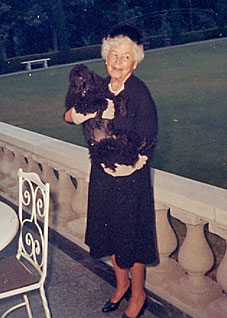

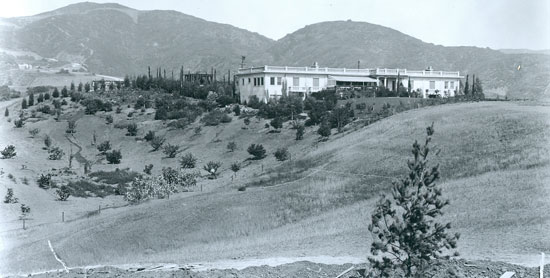

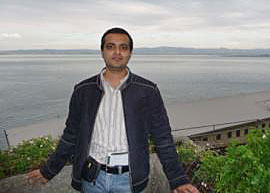
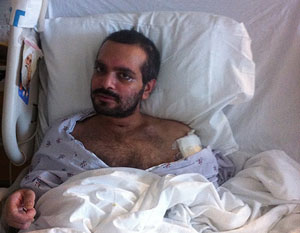
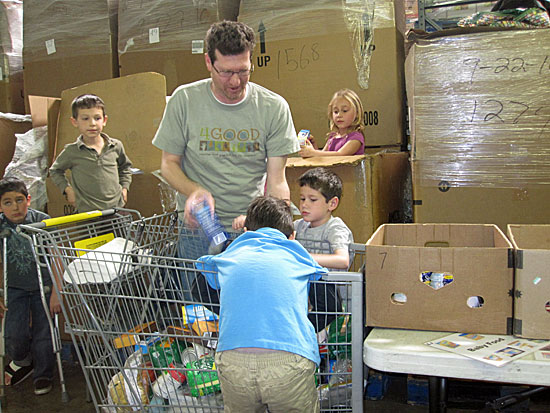
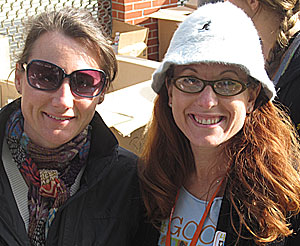

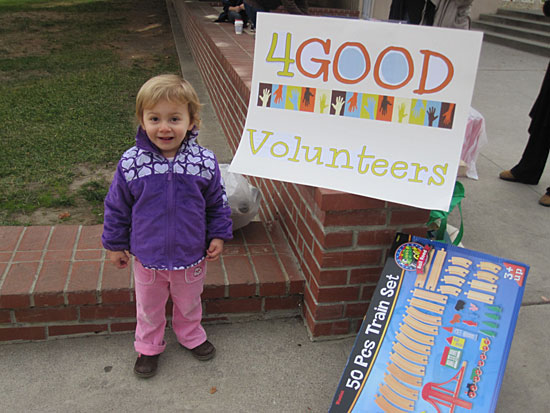
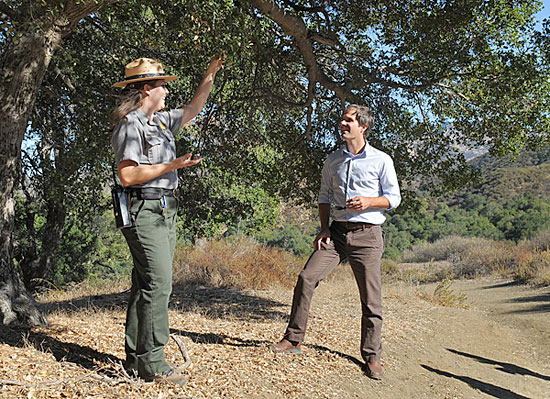


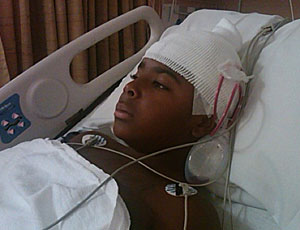
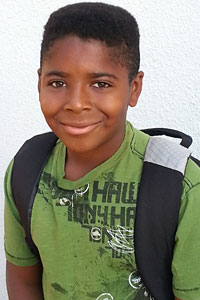
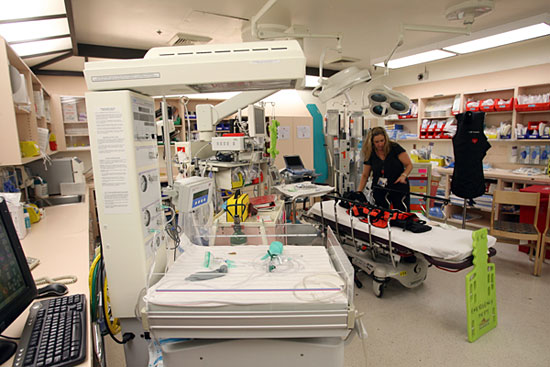
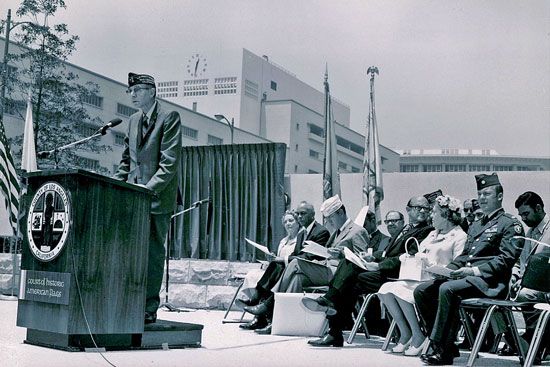
















 Check for the latest closure information
Check for the latest closure information








